Museums
Building on Pacific Standard Time
March 14, 2013
It’s big, it’s sprawling, it’s diverse, it could only have happened in Southern California.
You could be talking about L.A.
Or you could be talking about L.A. architecture, which is the subject of a big, sprawling, diverse SoCal initiative that launches next month, courtesy of the folks who brought you Pacific Standard Time, last year’s sweeping examination of Los Angeles’s place in the post-war art world.
“Pacific Standard Time Presents: Modern Architecture in L.A.” will celebrate the megalopolis’ man-made landscape with nine exhibitions and programs around the Southland, from tours of modernist homes in Pasadena to a first-ever major survey of Los Angeles’ postwar development at the J. Paul Getty Museum.
Underwritten by the Getty Foundation, which made some $3.6 million in grants to 15 participating organizations, the spinoff is about one-sixth the size of last year’s PST. “Obviously, we can’t do an initiative on the scale of Pacific Standard Time every year,” says J. Paul Getty Trust President and CEO Jim Cuno.
Still, it’s comprehensive. The Neutra ranch houses, the Norm’s diners, the Frank Gehry landmarks, the 405 Freeway, Beverly Boulevard photographed from a car window and Wilshire Boulevard explained for participants in CicLAvia—they’re all there (and more) in shows scattered from LACMA and MOCA to the University Art Gallery at Cal Poly Pomona.
Exhibitions are scheduled to run from April through July, though the heaviest programming will run from mid-May until mid-June. For a full list of events, click here.
Posted 3/7/13
Kubrick’s a hot ticket for hipsters
December 12, 2012
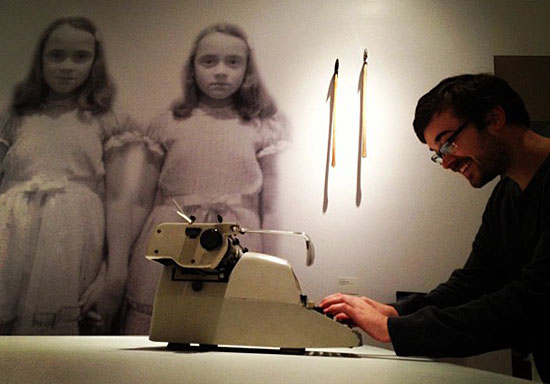
Enthusiastic patrons are sharing their Kubrick exhibition photos on social media. Instagram photo/natalie_matti
The average LACMA visitor this year was well over age 40, but the crowd at the museum’s new Stanley Kubrick exhibition has been looking more like the baby at the end of “2001: A Space Odyssey.”
Twenty minutes before closing on a recent Monday, the rooms were swarming with patrons young enough to be the late director’s grandkids. Here was 17-year-old David Feinziner, in from La Mirada with his parents; there was 23-year-old aspiring producer Kelsey Baca, checking out the great man’s typewriter with her 28-year-old aspiring director boyfriend, Ian Lewis. There was Alexandria Sivak, 28, who works in communications at the Getty, back for the second time since the show’s preview. There was goateed Ben Lee, a 32-year-old musician, whose friend had heard about the show online and alerted him from South Korea.
“Just to be able to see Kubrick’s notes and his vision and his process, and to see the creativity behind the film is just so cool,” marveled Leah Yananton, a 32-year-old filmmaker in a magenta knit trapper hat who had come with a New York friend who had caught the buzz from a twentysomething on Facebook.
“I plan on coming again at least once more before the show is over,” Yananton said, modestly noting that she, too, has an upcoming movie project: “It’s a coming-of-age film in post-production called ‘Surviving Me’.”
Museum officials say it’s too soon to know how the Kubrick show’s demographics will shake out; some 47,000 visitors have seen it so far, but the exhibition, which opened November 1, has only been running about six weeks and won’t close until the end of June.
However, Brooke Fruchtman, associate vice president of public engagement at LACMA, said all signs are that the show is appealing to the same kind of crowd that mobbed last year’s Tim Burton exhibition. That show, which drew more than 363,000 visitors, many in costume, had an audience with an average age of 33, eight years younger than the average visitor that fiscal year to the museum.
“Our Kubrick app is on track to be LACMA’s most downloaded app ever,” she said. “In the first week alone, we had 6,517 downloads.” Meanwhile, pickup on social media “has been huge for Kubrick, with Twitter, Instagram and Tumblr being flooded with images from the exhibition.”
Fruchtman said that, aside from an innovative series of Kubrick-themed pop-up dinners, the marketing of the show has been about the same as for prior ticketed exhibitions. Still, she added: “Sometimes it resonates more than others, depending on the show. “
“Oh yeah, it’s a younger crowd—and they’re all into it, too,” chuckled gallery attendant Rickie Williams on Monday. “They’ve been taking lots of pictures, compared to the older people who come in during the week, who are more often other directors or people who were in the crew or acted in his movies.” (Show business people turned out in force for the show’s opening gala, and star sightings in the crowd since then have included Ben Stiller, who tweeted his admiration from the show, Ryan O’Neal, who starred in “Barry Lyndon,” and “Full Metal Jacket’s” Vincent D’Onofrio.
“I think it’s just that his work is timeless,” said Lewis, the young director, who had taken a break from the cooking show that employs him, and who, with his young friend, Baca, was among the last to leave. “Look!” she breathed on their way out. “There’s his director’s chair!”
Lee, the musician, said the draw for him was “Barry Lyndon.” “It’s my favorite film—it’s so lyrical and touching. I’ve watched that movie more than ten times and I still find something new.”
To Feinziner, the high school senior, the show was a glimpse at a possible future: “I’ve applied to Chapman University, USC and UCLA,” he confided. “I’m planning to go to film school next year.”
Whatever the motivation, Fruchtman welcomes the youthful cohort, which the museum has sought to attract with free “NexGen” membership for people under 18, student discounts, school programs, a hip hop series, teen dances and other youth-oriented programs and events.
But, as any 21st century Los Angeles kid can attest, a thing either captures the imagination or it doesn’t, and so far, it appears that the Kubrick show has broadened the demographic. That’s good news for LACMA.
“Bringing in a younger—and generally more diverse—audience,” Fruchtman said, “is extremely important to us.”
Posted 12/12/12
Mapplethorpe, revisited
October 18, 2012
It was an L.A. coup when some 2,000 photographs by Robert Mapplethorpe ended up with the Los Angeles County Museum of Art and the J. Paul Getty Trust. Now art fans will get their first glimpse of that trove, as two small-but-revealing shows of Mapplethorpe’s work open in the next few days at the museums, with images from the classical to the infamous.
The $30 million-plus collection—which is expected to yield an even bigger and more comprehensive show in 2016 at the two museums—was jointly acquired from the Robert Mapplethorpe Foundation last year.
“[LACMA Director] Michael Govan had worked with the foundation during his time at the Guggenheim in New York,” says LACMA photo department curator Britt Salvesen. “He knew the value of the archives, and knew they would eventually need a repository.
“Flash forward to L.A., where he made the case that if LACMA were to partner with the Getty, they would have an ideal situation,” Salvesen remembers. “At the Getty Research Institute, the artwork would be accessible to researchers and could be seen with other archives that have a relationship to it. At the same time, the two museums would be great repositories for Mapplethorpe’s body of work, because at the Getty, it could be seen in the context of art history and classicism, and at LACMA, it could be seen with the art of the 1980s.”
This month’s shows—opening October 20 at LACMA and October 23 at the Getty Center—represent the first pass at that massive archive, which also includes hundreds of drawings and assemblages by Mapplethorpe, more than 1,000 un-editioned silver gelatin prints, more than 100,000 negatives, several films, voluminous documentation and correspondence, videotaped interviews and more.
As had been the case for most of the artist’s career, at least some of the work will be shown with parental warnings. LACMA’s show—shielded by interior walls and introduced by a pair of quotes from the obscenity trial it set off in 1990—will feature Mapplethorpe’s notorious X,Y and Z Portfolios, three sets of sexually charged, black-and-white photos themed, respectively, around homoerotic sadomasochism, floral studies and African-American male nudes.
Meanwhile at the Getty, another cache of 23 images will span Mapplethorpe’s career from early collages and Polaroids to his signature staged, classic nudes from the 1980s. “In Focus: Robert Mapplethorpe,” also will showcase Mapplethorpe’s social circle, including now-famous photos of his friend and early lover, Patti Smith.
Now regarded as one of the 20th century’s most influential fine art photographers, Mapplethorpe has been a controversial figure in the decades since his death at age 42 from AIDS complications in 1989. Some critics have viewed his stylized, black-and-white portraits and studies as groundbreaking, while others have excoriated their content as exploitative and pornographic.
The portfolios being exhibited at LACMA, for instance, ignited one of the hottest battles of the culture wars in 1990, when the late Sen. Jesse Helms (R-N.C.) denounced the National Endowment of the Arts for having helped underwrite their display in Philadelphia. The ensuing uproar spawned an obscenity trial in Cincinnati. (The museum director was ultimately acquitted.)
The Santa Monica Museum of Art displayed the X Portfolio as part of a restaging of that controversial exhibition in 2000, but otherwise the images have been rarely shown.
Salvesen predicts this month’s shows, and those to come, will move Mapplethorpe’s legacy beyond social controversy toward a broader perspective on his place as an artist. She points to younger artists whose work has built on and responded to Mapplethorpe’s, such as Catherine Opie and Glenn Ligon, and predecessors such as Edward Kienholz, whose work—also once known for its shock value—has stood the test of time.
“We’re trying to point forward in some sense to how Mapplethorpe can be seen from now into the future,” she says, “to the continued influence his work might have on other artists, as well as on our culture and society.”
Posted 10/18/12
Quite an Endeavour
August 8, 2012
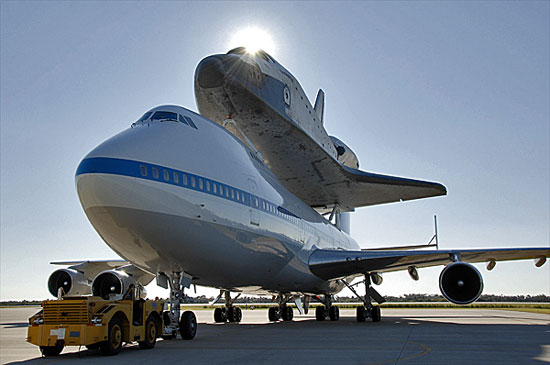
To get to Los Angeles, the space shuttle will hitch a ride on a 747, as it did here on an earlier mission.
Get ready, L.A., the space shuttle Endeavour will soon be rolling like a rock star.
On October 12, weather permitting, the decommissioned shuttle will begin a three-day, 12-mile journey from Los Angeles International Airport to the California Science Center in Exposition Park, the orbiter’s new retirement home.
Officials predict that the 2-m.p.h. urban journey will draw thousands of onlookers, reminiscent of the raucous crowds that turned out for The Rock’s four-county crawl to the Los Angeles Museum of Art, where it became the centerpiece of artist Michael Heizer’s “Levitated Mass.” The shuttle’s passage will mostly take place along Manchester Avenue, Crenshaw Boulevard and Martin Luther King Boulevard. (See map below.)
Mayor Antonio Villaraigosa, who joined Science Center and NASA officials to announce Endeavour’s itinerary, called the upcoming transport a “once-in-a-lifetime event” for the Los Angeles region, which he noted shares a long and storied history with aeronautics and space exploration. Just this week, scientists at JPL in Pasadena made history with the high-risk touch-down of the rover Curiosity on Mars.
In all, Endeavour completed 25 flights, totaling 4,671 Earth orbits. It was built to replace the Challenger, which exploded shortly after takeoff in 1986, claiming the lives of all 7 astronauts. Endeavour flew its final mission to the International Space Station in May of last year. Among the orbiter’s final crew was Commander Mike Kelly, whose wife, former Arizona Rep. Gabrielle Giffords was seriously wounded by a gunman last year.
With the 30-year shuttle program now over, Endeavour is one of three shuttles that will go on display around the country, and the first to travel along city streets. The others—Discovery at the Smithsonian outside Washington, D.C. and Atlantis in Florida—have already been delivered.
Endeavor is scheduled to arrive at LAX from Florida’s Kennedy Space Center on September 20, riding piggyback on a Boeing 747. That date, however, is dependent on weather conditions, said Stephanie Stilson of NASA, a key player in the transport. “Water drops can become like BB’s” on the fragile surface of the 170,000-pound craft, she said.
After the shuttle is removed from its carrier with a series of cranes and slings, it will be placed on the “Overland Transporter,” a frame built by NASA for “state of the art maneuverability and stability,” according to the agency.
And it’ll need it.
Some stretches of the passage to the Science Center are so narrow that some trees may need to be removed to accommodate the craft’s 78-foot wingspan. In those cases, two trees will be planted for each one that must be uprooted. Villaraigosa said that, like the shuttle itself, its earth-bound journey will be “a marvel of ingenuity and engineering.”
Along the way, on October 13, there’ll be an official ceremony at Inglewood City Hall in the morning and a curbside celebration that evening produced by dancer/choreographer Debbie Allen at the intersection of MLK and Crenshaw boulevards.
At the Science Center, the spacecraft initially will be housed in a cavernous temporary hangar, which is scheduled to be open to the public starting October 30 for the exhibition “Mission 26: The Big Endeavor.” Eventually, the shuttle will be the centerpiece of the new Samuel Oschin Air and Space Center. The $200 million price for the new center and Endeavour’s transport is being underwritten by private donors.
View Mission 26: The Big Endeavour in a larger map
Posted 8/8/12
ArtWalk with LACMA’s Muse
June 14, 2012
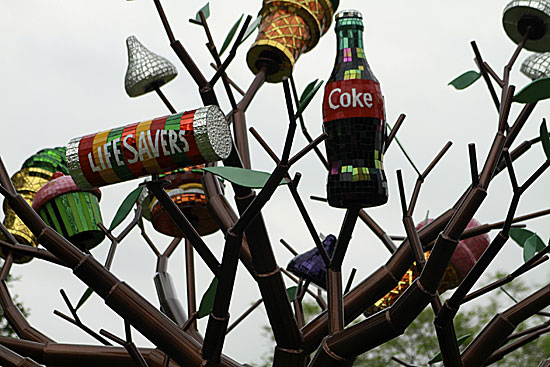
Pop art just grew on trees at the 2011 LACMA Muse ArtWalk. This is "Urban Fruit Tree," by Jean Wells.
Out of the galleries and into the streets! This Saturday, the 17th annual LACMA Muse ArtWalk will bring local artists, museums and galleries together for a free, day-long community celebration of art.
“It’s really about shining a light on what goes on in the community here,” said ArtWalk organizer Jason Gaulton. “It is a fantastic opportunity to work with some of the great artists around us and a chance to rally the Miracle Mile scene as a whole.”
LACMA and the Architecture + Design Museum will both offer free admission for the day. In front of LACMA, contemporary dance groups will involve audiences in performances that highlight the “town hall” setting of the museum’s entrance. There also will be live music from experimental band Little Red Lung and blues guitarist Jared James Nichols in front of LACMA’S iconic Urban Light, along with light projection installations and art workshops for all ages.
About 20 art galleries along La Brea Avenueand Wilshire Boulevard will also open their doors for free. At the galleries, artists, curators and critics will be on hand to present and discuss various works and exhibits. ForYourArt, a collective that moved to the neighborhood just this year, will present a range of “pop-up exhibits” and stage an art scavenger hunt aimed at helping patrons discover all that the local scene has to offer.
After the day is through, the truly committed can shell out $25 and continue the art fest at the ArtWalk After Party. The party features music from Dublab DJs Secret Circuit, Ale, and Lavenders, as well as visuals from The Joshua Light Show—best known for their psychedelic “liquid lights” installations that complemented late-1960s acts like Janis Joplin, The Who, Jimi Hendrix and The Grateful Dead. At 10 p.m., headphones will be distributed and the party will shift to a “silent disco” to keep the fun going—and the neighbors happy.
Muse is LACMA’s membership group for art lovers in their 20s, 30s and 40s. ArtWalk, one of their biggest annual events, is aimed at cultivating new generations of patrons by engaging audiences of all ages.
The ArtWalk takes place Saturday, June 16, from noon until 8 p.m. along La Brea and Wilshire. The after party is from 8:30 p.m. to 11 p.m. in the LACMA’s BP Grand Entrance at 5905 Wilshire.
Posted 6/14/12
The Rock is a wrap—for now
March 10, 2012
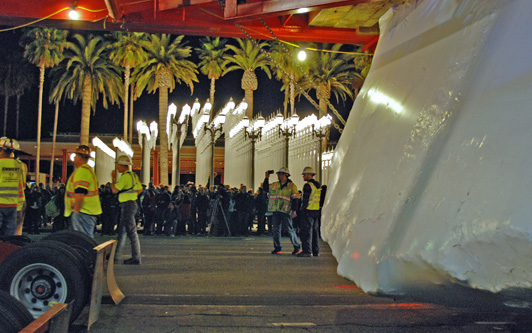
After its 4:30 a.m arrival, The Rock was parked for a photo-op in front of Chris Burden's iconic "Urban Light."
As crowds cheered and a loudspeaker blared Queen’s “We Will Rock You,” the Rock rolled into the Los Angeles County Museum of Art just before dawn on Saturday morning, riding down Wilshire Boulevard in its massive red transport like a 340-ton beauty in the Rose Parade.
“Fantastic,” said LACMA Director Michael Govan, unable to stop smiling as the focal point of “Levitated Mass,” the museum’s latest permanent installation, paused in front of the museum.
“Yahoo!” applauded Govan’s 7-year-old daughter, who was dressed in a pink coat and hoisted high on his shoulders.
“Magnificent!” breathed Alexandra Thum, a West Hollywood product designer who had worked her way through the crowd to get a curbside view. “It’s just so great to be here and see all the community together.” Around them, several hundred onlookers cried “Bravo! Bravo!” under the antique street lamps of another iconic LACMA masterpiece, Chris Burden’s “Urban Light.”
The reception capped an 11-day trip across 22 cities and four counties for the boulder, a hunk of granite the size of a 2-story teardrop that, in the weeks ahead, will be affixed atop a concrete channel, creating the illusion that it is levitating overhead. The work by Nevada earth artist Michael Heizer is scheduled to open in spring or early summer. (The famously reclusive artist was not on hand Saturday, but is expected to be in Los Angeles for the piece’s assembly.)
Although The Rock, as it came to be known, is only one component in the installation, it instantly became a media event itself because of the novelty and engineering involved in its move from its Jurupa Valley quarry in Riverside County.
Progressing at a stately 5 miles per hour and parked by day to minimize traffic disruptions, it inspired a marriage proposal in Glen Avon and a citywide block party in Long Beach, gawker’s block in Diamond Bar and pajama-clad sightseers near Expositon Park. In Rowland Heights, an accountant came home to discover it outside his bedroom window. So many people posed next to it for photos that, perhaps inevitably, it became an Internet meme for a digital moment.
While many thrilled at the spectacle, some decried its estimated $10-million expense, which has been covered entirely by private donors. “I think they should have spent $10 million on art programs instead of this rock,” said Patrick Taylor, a security guard and father of two who lives near Exposition Park.
Overall, however, museum officials were pleasantly surprised at the public reaction, which included a wave of fresh awareness for LACMA.
“When this started, I thought it would be much more controversial,” said Govan. “You know, ‘Is it art? Is it not art?’ But people mostly have just been fascinated and appreciative. And so many have learned about the museum from this experience.”
On Friday night—or, more accurately, Saturday morning—that appreciation was out in full, only-in-L.A. glory as thousands pulled all-nighters for the last leg of The Rock’s journey, up Western Avenue and along Wilshire Boulevard’s famed Miracle Mile.
Onlookers on foot and on bicycle snapped photos and videos and narrated the boulder’s slow-speed progress on hundreds of cell phones. Dogs barked. Tourists jumped out of buses and cabs to investigate the commotion.
A tall man dressed as Jesus and a shorter person dressed as a unicorn posed for pictures. Comedians worked the crowd. (“Have you seen my dog? It’s a ROCK-weiler!”) Further back in the crowd, actress Sharon Lawrence (“NYPD Blue,” “Desperate Housewives”) kept a low profile with her physician husband.
When the boulder slowed to make the painstaking turn in front of the Wiltern Theatre, a man waving an American flag ran out into the intersection, whooping. When the transporter was forced to stop, waiting for a tow-truck to remove a Dodge illegally parked in front of a karaoke bar on Wilshire, a dazed-looking young woman leaped into the street and either fell or tried to crawl underneath it. Shaken crewmembers escorted her back to the sidewalk and issued her a stern warning.
But for the most part, the mood was festive and communal, and the boulder’s movers—many of whom had walked alongside the megalith for most of the 105-mile route—were ready to celebrate by 4:30 a.m., when the procession paused in front of “Urban Light” for its final paparazzi moment.
“I got blisters on three of my toes,” laughed crewman Joe Schofield of Emmert International, who said on Saturday that he had been on foot, watching the rock, for more than 75 miles of the journey. Separate work crews ran ahead at each stop to clear the path of utility lines and landscaping. Workers from Time Warner Cable said they had moved lines in some 90 locations.
“Everybody has been clapping and cheering and connecting,” said Emmert General Manager Mark Albrecht, noting that, aside from that one incident with the young woman and a couple of mauled palm trees, the delivery was almost miraculously free of hitches. Around him, hard-hatted workers humbly ducked their heads as Los Angeles County Supervisor Zev Yaroslavsky and Los Angeles City Councilman Tom LaBonge thanked them.
Meanwhile, a crush of spectators rushed to touch the shrink-wrapped megalith with their fingertips until the transporter was put into gear again for the last yards of its journey, finally disappearing behind a gate on Fairfax Avenue and Sixth Street at 5:03 a.m.
Pluto-killing scientist talks
February 29, 2012

Poor little Pluto never saw it coming. Find out why Dr. Michael Brown pulled the plug on the one-time 9th planet.
Still miffed that Pluto’s not a planet anymore? The man responsible is coming to the county’s Natural History Museum to give his side of the story.
“I‘m ready for them to come in with rocks and throw their drinks and attack,” said Dr. Michael Brown, who’ll appear at the museum on Friday, March 2. “I know they are all sad about it.”
In 2005, Brown announced the discovery of Eris, an object larger than Pluto at the edge of the solar system. His team’s findings led the International Astronomical Union to revise the definition of “planet.” This demoted Pluto to a “dwarf planet,” causing an uproar among many who knew and loved the one-time ninth planet.
“Some of it is just funny,” Brown said of the backlash. “And some of it is just downright mean, which is almost funnier.”
Brown is a professor of planetary astronomy at the California Institute of Technology. His work has been featured in publications including the New York Times, The New Yorker and Discover magazine. In 2006, he was honored as one of Time Magazine’s “100 Most Influential People” and one of Los Angeles Magazine’s “Most Powerful Angelenos” for his discoveries. That same year, Wired Magazine named him one of the “Top Ten Sexiest Geeks.”
He told Wired in 2010 that even his 5-year-old daughter was perturbed by Pluto’s planetary downgrade. “She has learned from general discussions that I killed Pluto and that killing is bad. Therefore, I’ve done something bad, and so she’s kind of mad at me,” he said.
Brown, who’s also the author of the book “How I Killed Pluto and Why It Had It Coming,” hopes that by the end of the discussion people will be ready to lay down their torches and pitchforks.
“One of the things that will surprise people the most is how reasonable the decision to demote Pluto was,” he said. “I think they will leave and decide they should be mad at Pluto, not me.”
Brown’s talk, called “Why Pluto Had to Die,” starts at 6:30 p.m. It’s part of the museum’s “First Fridays” series combining science and innovative music. The programs aim to attract young and not-so-young adults to the museum, even though the field trips of their youth may be long past.
The tunes kick in at 5:30 p.m. with KCRW DJs Anthony Valadez and Chuck P. At 8 p.m. EMA takes the stage, combining a free jazz lyrical style with fuzzy, droning guitar rock reminiscent of Sonic Youth.
Zola Jesus, the night’s headliner, is a self-made, up-and-coming electronic pop musician at the age of 22. Her compositions pair trance-inducing electronic sounds with haunting, almost-mournful vocals. She goes on at 9:15 p.m. amid the dioramas of the North American Mammal Hall.
General admission to all of it is $18, and free for Universityof Southern California students. The museum is located at 900 Exposition Boulevard in Los Angeles. Parking is $10, or plan to get there with Metro. While advance tickets are sold out, don’t worry—same day tickets will be available at the south entrance starting at 5 p.m.
Posted 2/29/12
One dream, many hands in Metropolis II
February 15, 2012
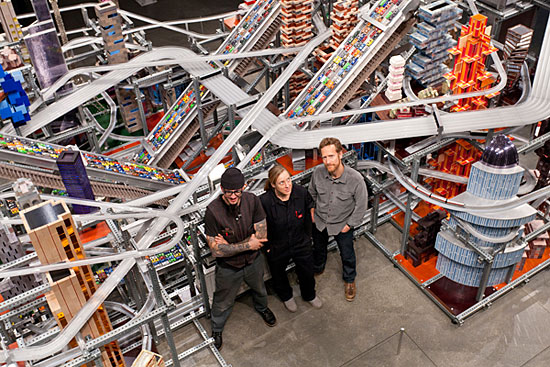
Many helped build Burden's city, including Rich Sandomeno, Alison Walker and leader Zak Cook. Photo © 2012 Museum Associates/LACMA
Chris Burden’s vast, new miniature skyline may have been one artist’s urban vision, but behind the scenes, it took a village to build “Metropolis II”.
“It was a long process—almost five years—and it took a lot of people,” says the L.A. artist on a recent morning at LACMA, straining to be heard over the din of his creation. The idea, he says, was to evoke the energy of a modern city; around him 4,400 tiny toy wheels on 1,100 toy cars whoosh around an elaborate thicket of toy skyscrapers at up to 240 scale miles per hour.
The room-sized piece, opening to the public January 14, is on long-term loan to the museum from its owner, LACMA trustee Nicolas Berggruen. A big hit in sneak peeks last month, it will be available for viewing anytime, but will only operate Fridays through Sundays, with a special showing on the Martin Luther King, Jr. holiday.
Situated just a short walk from Burden’s iconic “Urban Light,” it is mesmerizing and frenetic, a singular vision of a way of life familiar to every visitor with a car in the parking garage of the museum. But Zak Cook, Burden’s lead engineer, says as many as eight people at a time were assigned to the project, working under the artist’s watchful eye in his rural studio in Topanga.
“In all,” he says, “probably 14 people had a hand in it.”
Hiring crews of assistants isn’t unusual for successful artists, who often need extra hands and special expertise to execute large-scale ideas. “It doesn’t take away from the fact that it’s Chris’ work,” Cook notes. “The work couldn’t exist without Chris. It could exist without me.”
Burden’s crew, like the piece, reflected Southern California: There were two special-effects artists and two college-level art instructors, a maker of artisan snowboards, woodworkers, ceramicists and assorted masters of fine arts from UC Riverside and UCLA. One of the craftsmen on the prototype was the lead guitarist in the L.A.-based band “Dengue Fever.” Much of the infrastructure and train wiring was done by a heavy diesel mechanic-turned-jewelry-designer who was a finalist last year on Lifetime Television’s “Project Accessory.”
Some laid the Plexiglas track. Some built the dreamlike skyscrapers. Some installed the intricate floors and platforms. UC Riverside MFA Alison Walker and the “Project Accessory” finalist Rich Sandomeno came to know the piece so well that LACMA has since hired them to operate and maintain “Metropolis II” and act as a sort of pit crew.
“It was supposed to be a 9-month job and I ended up working on it for three years,” joked Sandomeno. “But it’s been so great to work with Chris and Zak and all the other artists. Besides, he adds: “When I was a kid, I loved Hot Wheels. “
The combination of Burden’s vision and all that painstaking labor is as intricate and playfully serious as art gets—a vast, buzzing skyline that has been compared to New York, L.A., “The Jetsons” and the 1939 World’s Fair. In the course of an hour, the tiny vehicles whip around the thicket of fanciful high-rises a collective 100,000 times on 18 lanes of traffic.
“It’s a city of the past and a city of the future,” says Burden. “It’s a city of the past in the sense that the cars run free, and a city of the future in their speed.”
An earlier, much smaller, version, with only about 80 cars, was built in 2004 for a Japanese museum, Burden says, “but they showed it for six months and then the museum changed direction. “ After the piece was put into storage—“all that work and then nobody got to see it”—Burden decided to make another Metropolis that would be “bigger and better.”
“Metropolis II,” however, took on a life of its own, says Burden: “I think we finished right around the time of Carmageddon. Every building took three or four months, which, I think you could build a tract house in that time.”
Cook served as general contractor for Burden’s architectural direction, working out such not-so-minor details as how to make the cars move reliably. (After much trial-and-error, Cook invented a sturdy, yet invisible, electrically powered conveyance system that hauls the toy cars uphill with magnets, like a rollercoaster, then releases them.)
Burden guided the team closely, Cook says, but also welcomed their input. Many contributed ideas for the exquisite buildings, which the team gave informal names: “AzDec Plaza” was a half-Aztec, half-Deco extravaganza contributed by Walker. An octagonal black high rise with blue windows, built by painter and fellow MFA Greg Kozaki, was known as “DarkTower.” A beautiful blue-and-green glass tile skyscraper was dubbed “Linkous Tower” by Frank Diettinger, a mold-maker who had done special effects for films such as “Sleepy Hollow” and “Bride of Chucky”, and who wanted to honor deceased indie singer-songwriter Mark Linkous.
“Whoever built it got to name it,” says Cook, adding that there was one major exception. “There’s an Eiffel Tower-looking building made from erector set parts, with the uppermost narrow part kind of extended, and Chris named that one.”
“Yeah,” laughs Burden, “I call it ‘Viagra Tower’ because it’s too tall.”
Cook worked on the piece from its inception. Of all the team members, he acknowledges, he probably has the least artistic resume. The 42-year-old son of a former Time correspondent, he graduated from UCLA with a degree in geography and worked for several years in the consulting division of CALSTART, a Pasadena-based clean transportation consortium.
But after a trip to India in 2000, he says, he realized that he didn’t want to keep doing white papers on the environmental impact of ports and airports; he wanted to write fiction and children’s books.
In search of a day job, he got a call one day from a friend who worked for Burden’s wife and fellow artist Nancy Rubins; Burden needed someone to help restore his 1998 sculpture “Hell Gate”, a massive bridge made of erector set pieces. The friend knew that Cook had done construction work in college.
Learning on the job, Cook then went on to help Burden build several more major pieces, including Burden’s 2001 “Bateau de Guerre”, a massive battleship made of gas canisters, and his 2002 model of a British landmark, “Tyne Bridge”.
Burden jokes that Cook “was in charge of work-ethic.”
“He’s very precise and thorough,” says the artist. “I couldn’t have done this work without somebody like him.”
Cook says that now that “Metropolis II” is finished, he intends to return to his own pursuits, and maybe finally finish those children’s stories.
“Not that Chris and I would rule out working together again in the future, but, honestly, this is such a great note to go out on,” he says, watching from a balcony at LACMA as the traffic hums by in the city that he helped make.
“I don’t see how I could ever top this.”
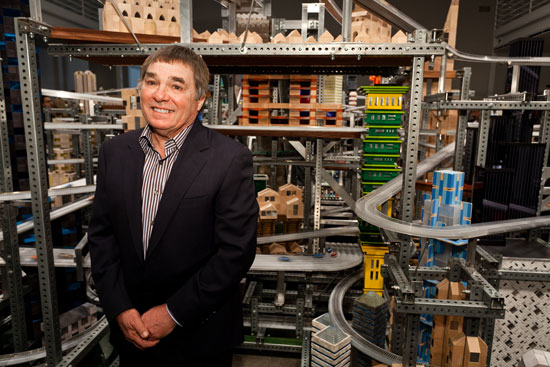
Chris Burden with his creation, created in his Topanga workshop. Photo © 2012 Museum Associates/LACMA
Posted 1/12/12
It’s officially “Pacific Standard Time”
September 26, 2011
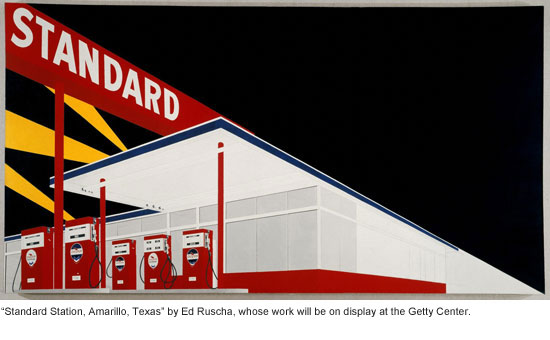 Pacific Standard Time starts this week in earnest, examining L.A.’s role in the postwar arts scene in venues as vaunted as the Getty Center and as modest as a Westside school for the arts.
Pacific Standard Time starts this week in earnest, examining L.A.’s role in the postwar arts scene in venues as vaunted as the Getty Center and as modest as a Westside school for the arts.
Although choice sneak previews have been open for a few weeks at the Los Angeles County Museum of Art and at smaller museums, this weekend marks the official opening of the massive arts initiative centered on Southern California. Whether you love art or just love L.A., the range of shows opening this week should, like the city itself, have a little something for everyone.
Highlights include the first major study of modern California design at LACMA, with an accompanying side exhibition at the A+D Architecture and Design Museum honing in on the work and philosophy of Charles and Ray Eames. The LACMA show, California Design, 1930-1965: “Living in a Modern Way,” will start with the origins of California modernism in the 1930s and include, along with important work by Richard Neutra and Rudolph Schindler, a vintage Airstream Clipper and a reconstruction of the Eames’ living room, which was dismantled piece by piece and moved to the museum from the Eames House in Pacific Palisades.
Another must-see show will be at the Getty Center, where Pacific Standard Time: Crosscurrents in L.A. Paintings and Sculpture will look at those two art forms in Southern California from the 1940s until the 1970s. The exhibition, featuring some 50 important L.A. artists, is in some ways the ground zero for the Pacific Standard Time initiative, which was launched as a joint initiative of the Getty Research Institute and the Getty Foundation.
The Natural History Museum of Los Angeles will also be in on the PST action, with a show that highlights its role as the city’s contemporary art venue before its art exhibitions were moved to LACMA in the mid-1960s. Among the featured artists will be John Baldessari, Ed Moses, Robert Irwin and Ed Ruscha.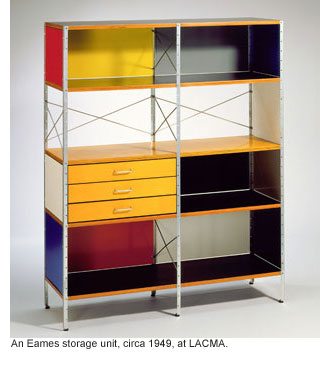
The Hammer Museum will examine L.A.’s African American visual artists, ONE National Gay and Lesbian Archives will look at the gay and lesbian art scene here and a show at MOCA’s Geffen Contemporary will show how L.A. art reflected the foment of the Vietnam War and the Watergate Era.
Meanwhile, a small show at the Sam Francis Gallery at the Crossroads School will explore the role of women art dealers in L.A. in the 1960s and 1970s.
And that’s only a taste of PST’s opening week of shows, talks and happenings. For a more complete calendar, click here, and for information on the initiative, click here.
Posted 9/26/11




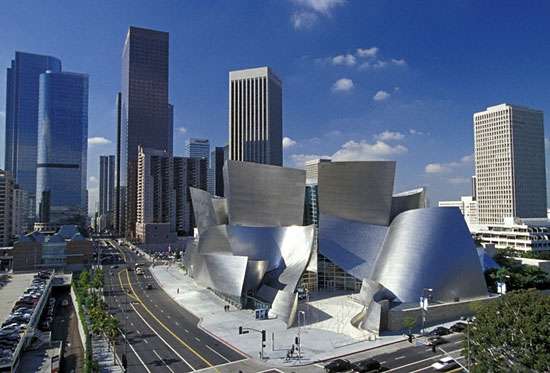
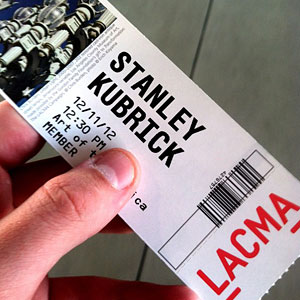
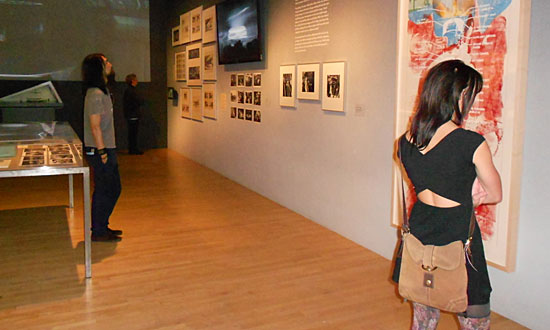
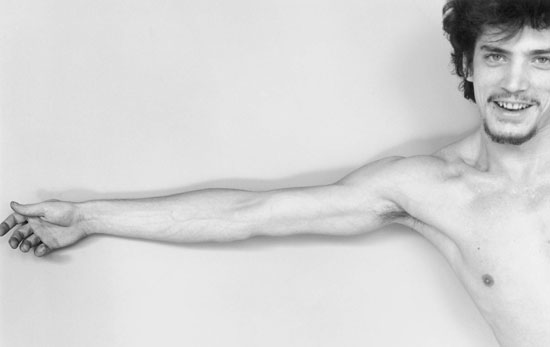
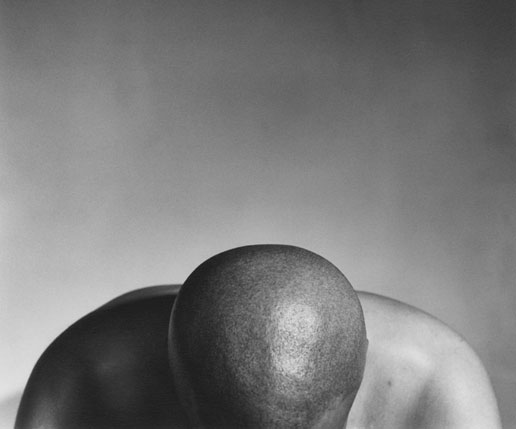
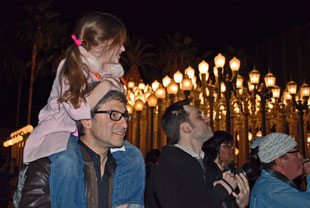

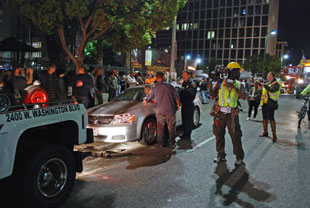

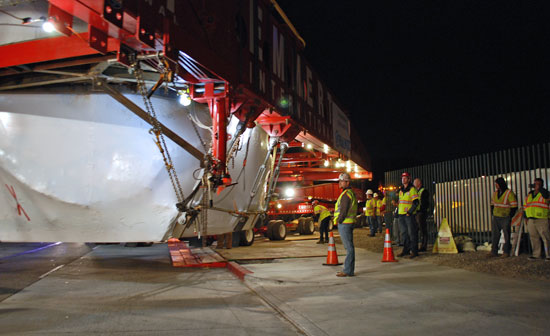
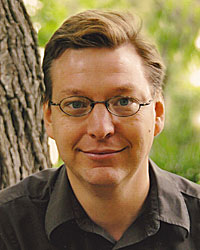










 405 bridge work causes a stink
405 bridge work causes a stink